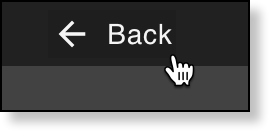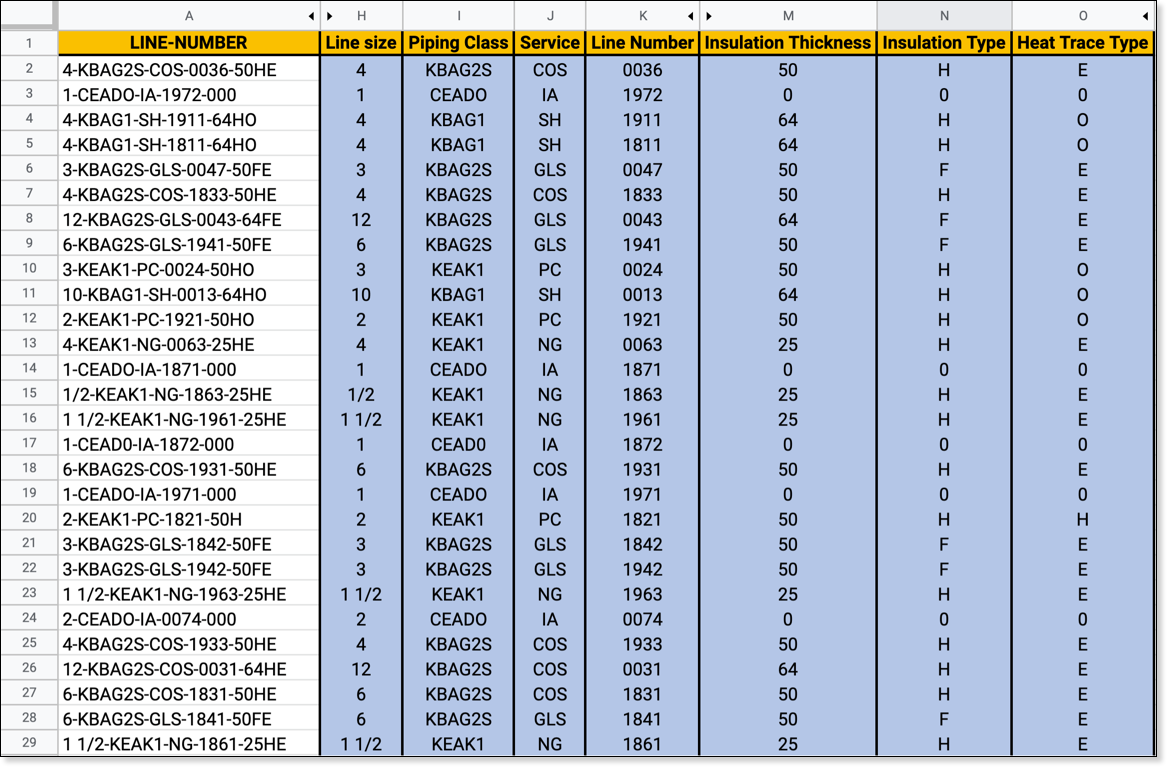Extracting Line Numbers Tutorial¶

About 10 minutes
In this tutorial, we will use DataSeer to extract line numbers from a P&ID. We will then export the extracted data from DataSeer.
This tutorial is divided into the following sections:
- Learning Objectives - things you will know how to do after completing this tutorial.
- Setup - set up necessary before you get started.
- Instructions - instructions on how to complete the tutorial.
- Finishing Up - challenges and further reading for after the tutorial.
Learning Objectives¶
After completing this tutorial, you will know how to:
- Add projects and upload diagrams to them
- Extract line numbers from diagrams
- Export data from DataSeer for use in other documents
Setup¶
Before you start this tutorial, you must do the following:
- Contact your system administrator to get a DataSeer user account
Instructions¶
Now let's get started...
1. Obtain a P&ID¶
Store a P&ID containing pipes (line numbers) in PDF format to your local drive to be uploaded to DataSeer.
2. Add a Project¶
We now need to create a new project in DataSeer and upload your P&ID to it.
- Access DataSeer.
- Click NEW PROJECT.
- In Project Name, enter "Line Number Tutorial".
- Click the upload box and select your P&ID.
-
Click CREATE.
DataSeer uploads your P&ID to a new project. Once the upload is complete, the new project displays under Your Projects.
-
Click LAUNCH.
The project opens and your P&ID displays in the Diagram Viewer.
3. Extract the Line Numbers¶
The next step is to extract the line numbers from the P&ID.
Important
This is where you get to see the power of DataSeer in action.
- Open the Text tab.
-
Click on the toolbar.
The Search window displays.
-
Under Category Selection, select Line Number.
-
In Pattern, enter a regex pattern.
Example
The
.+-.+-.+-.+-.+pattern detects line numbers that contain four dashes-Tip
Check out the Tips for guidance on how to use regex patterns to identify text.
-
Click SEARCH ALL PAGES.
The Review window displays with the first matching line number. The line is also highlighted on the diagram for reference.

-
Review the matching line numbers:
Info
- To approve a match, ensure that the correct Id is extracted and adjust if necessary, then click APPROVE.
- To approve all matches, click next to APPROVE, select Approve All, then click APPROVE ALL.
- To reject a match, click REJECT.
- To end the review at any time, click STOP REVIEW.
Tip
- Once you approve or reject a match, the next match displays for review. Continue until you review the full list of matches.
- As you approve matching line numbers, they get added to the list on the sidebar.
-
Click on the toolbar.
- Under Symbol Classes, select Line Numbers.
- Review the approved matches on the print preview.
4. Export the Data¶
The next step is to export the line number data you extracted.
-
Click on the Navigation bar.

The Project Library displays.
-
Click on the project and select Download Text data.
DataSeer exports a CSV file into the Downloads folder for your browser.
-
Open the CSV file in a spreadsheet app, such as Microsoft Excel or Google Sheets.
You can now add the data to your project documents.
Example
Here's an example of a line designation table featuring the line numbers we extracted in this tutorial:

Finishing Up¶
Congratulations! You've now extracted line numbers from a P&ID. We hope you now understand how DataSeer can drastically reduce the time it takes to extract text from diagrams.
Want to expand your knowledge further? Try the following:
Recommended Reading
Read the following articles to learn more about the features used in this tutorial.
| Feature | Article |
|---|---|
| Extracting text | Extracting Text |
| Exporting data | Exporting Data |